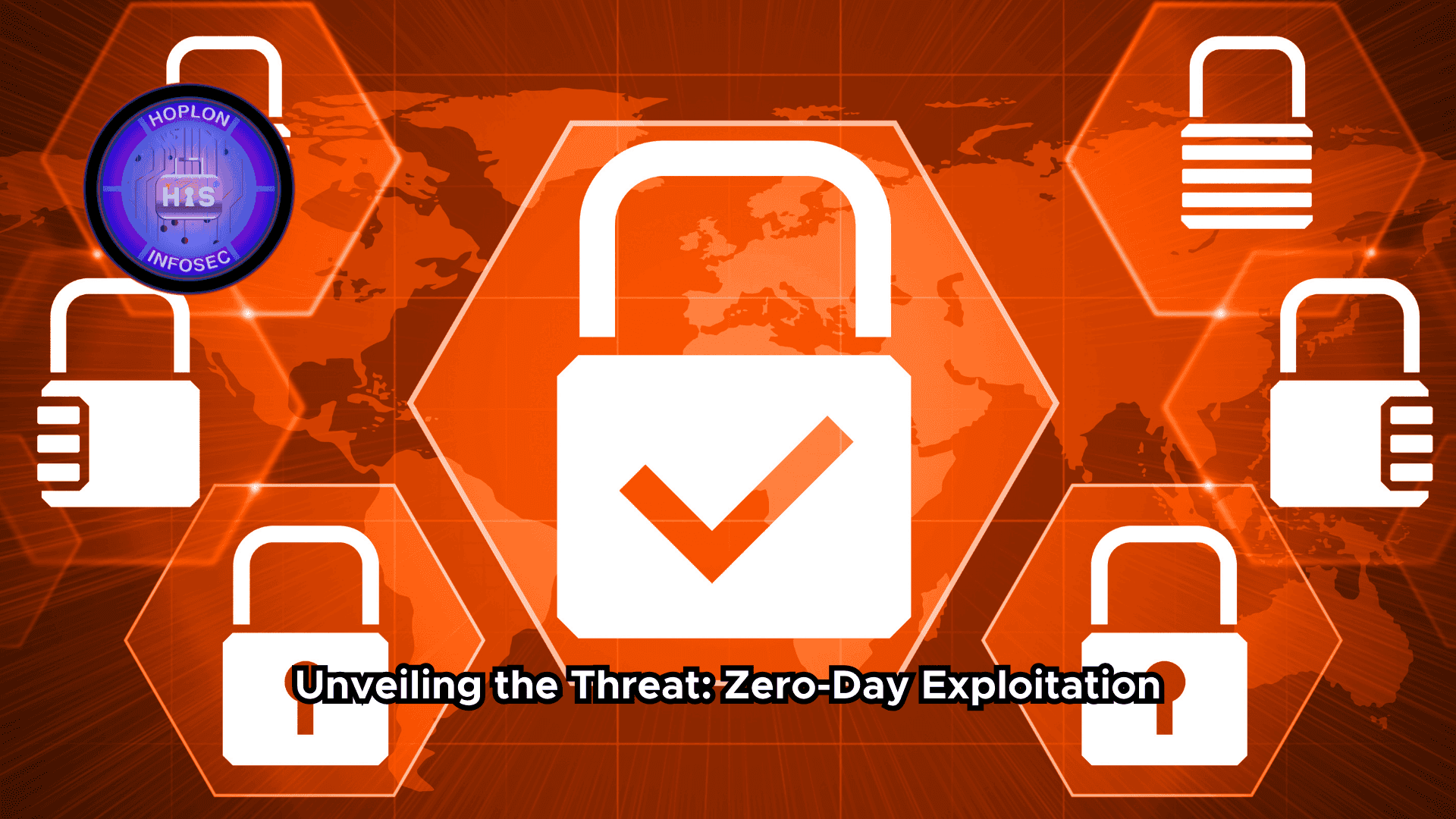Unveiling the Threat: Zero-Day Exploitation and Remote Access Attacks

Hoplon InfoSec
13 Sep, 2024
In the realm of cybersecurity, few threats are as insidious as zero-day exploitation. These vulnerabilities, unknown to the software vendor or the public, are coveted by attackers for their potential to compromise systems before any defenses can be enacted. In recent developments, zero-day exploitation has become a critical focus, particularly regarding remote access attacks. This blog delves into the intricacies of zero-day exploitation and its implications for remote access security, drawing on the latest insights and developments in the field.
Understanding Zero-Day Exploitation
Zero-day exploitation refers to the use of a previously undisclosed vulnerability in software or hardware to execute malicious activities. The term “zero-day” signifies that the threat is exploited on the very first day that the vulnerability is discovered, without any prior warning or defense. This kind of exploitation is particularly dangerous because there is no patch or fix available to counteract the attack.
The nature of zero-day vulnerabilities makes them highly valuable on the black market. Cybercriminals often trade these exploits for significant sums of money, or use them to launch high-profile attacks. The covert nature of these vulnerabilities means they can remain undetected for long periods, giving attackers ample time to exploit them before a fix is developed.
The Rise of Remote Access Attacks
Remote access attacks are a growing concern in the cybersecurity landscape. These attacks allow adversaries to gain unauthorized access to systems from a distance, often through compromised credentials or exploited vulnerabilities. The rise of remote work and cloud-based services has expanded the attack surface, making remote access vulnerabilities increasingly attractive targets for cybercriminals.
Zero-day exploitation plays a critical role in remote access attacks. When an attacker discovers a zero-day vulnerability that affects a remote access system, they can gain unauthorized entry to networks and systems without triggering standard security measures. This can lead to data breaches, system compromise, and significant operational disruptions.
Case Studies: Real-World Implications
Several high-profile incidents illustrate the dangers of zero-day exploitation in remote access contexts. For instance, the 2020 SolarWinds attack, attributed to a sophisticated nation-state actor, utilized a zero-day vulnerability to compromise the software supply chain. This breach allowed the attackers to remotely access and manipulate numerous organizations’ IT infrastructures, demonstrating the severe impact of such exploits.
Similarly, the 2021 Exchange Server vulnerability, also a zero-day exploit, highlighted the risks associated with remote access attacks. Attackers used this vulnerability to gain remote control of email servers, leading to widespread data breaches and system disruptions. These cases underscore the need for robust security measures to protect against zero-day exploitation.
Mitigating Zero-Day Exploitation Risks
Defending against zero-day exploitation requires a multifaceted approach. Traditional security measures, such as firewalls and antivirus software, may not be sufficient due to the unknown nature of these vulnerabilities. Instead, organizations should focus on implementing a layered security strategy to mitigate risks.
Regular Patching and Updates: While zero-day vulnerabilities are by definition unknown, maintaining up-to-date software and systems helps protect against known threats and reduces the overall attack surface. Regular patching and updates are essential in minimizing vulnerabilities.
Network Segmentation: Segmenting networks into smaller, isolated sections can limit the spread of an attack. Even if a zero-day exploit compromises one segment, the damage can be contained, reducing the risk to the entire network.
Advanced Threat Detection: Employing advanced threat detection solutions, such as behavior-based monitoring and anomaly detection, can help identify unusual activities indicative of zero-day exploitation. These tools can provide early warnings and facilitate rapid response.
Zero Trust Architecture: Adopting a Zero Trust security model, which operates on the principle of “never trust, always verify,” ensures that all access requests, whether internal or external, are thoroughly authenticated and authorized. This approach can mitigate the impact of remote access attacks by enforcing strict access controls.
The Role of Threat Intelligence
Threat intelligence plays a crucial role in understanding and defending against zero-day exploitation. By analyzing emerging threats and vulnerabilities, organizations can gain insights into potential zero-day exploits and their associated risks. This proactive approach allows for better preparation and response strategies.
Collaboration with threat intelligence providers and participation in information-sharing communities can enhance an organization’s ability to stay ahead of potential threats. Staying informed about the latest vulnerabilities and attack vectors enables organizations to implement effective countermeasures and protect their remote access systems.
The Future of Zero-Day Exploitation
As technology continues to evolve, the landscape of zero-day exploitation and remote access attacks will also change. Emerging technologies, such as artificial intelligence and machine learning, offer both opportunities and challenges in the realm of cybersecurity.
On one hand, AI-powered security solutions can enhance threat detection and response capabilities. On the other hand, attackers may also leverage these technologies to develop more sophisticated exploits. Staying abreast of technological advancements and adapting security strategies accordingly will be crucial in addressing future zero-day threats.
Conclusion
Zero-day exploitation remains a formidable challenge in the cybersecurity domain, particularly when it comes to remote access attacks. The covert nature of these vulnerabilities and their potential for significant damage underscore the importance of proactive and layered security measures. By understanding the dynamics of zero-day exploitation, implementing robust security practices, and leveraging threat intelligence, organizations can better safeguard their systems against these evolving threats.
As we navigate the complexities of cybersecurity, it is essential to remain vigilant and adaptable. The rise of remote access and the persistence of zero-day vulnerabilities demand ongoing efforts to enhance security defenses and mitigate risks. In this ever-evolving landscape, a proactive approach and a commitment to continuous improvement are key to protecting against the hidden dangers of zero-day exploitation.
Reference
Exploitation Zero-Day Vulnerabilities Remote Access Became Prime Target (cybersecuritynews.com)
Share this :